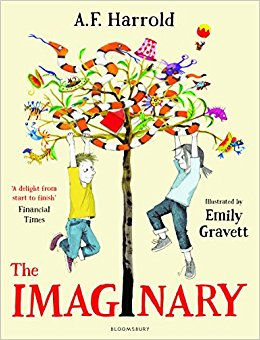The Imaginary
- stephdunn11
- Jul 8, 2016
- 1 min read

Author: A. F. Harrold
Illustrator: Emily Gravett
Age: KS2
UKLA Book Awards 7-11 category winner
Themes:
Escapism
Friendship
Adventure
Grief
Teamwork
Problem solving
Imagination
By breaking up the novel through the enhancement of illustrations, the book becomes easier to read and more enjoyable. The images help with understanding the text and act as a stimulus for discussion and creative ideas. The story itself is not too complex and is at a child's level of thinking, as the book is from a child's point of view, therefore is easy to relate to and to follow. Also, the chapters are an appropriate length.
Good resource to use for creative writing, due to the vivid imagery and the illustrations. Children could write letters to Mr Bunting, persuading him to stop eating the imaginary friends. Another writing exercise could be to write a descriptive piece about an imaginary world, which could extend across the curriculum by creating this world through art and computing. Drama could also be used to take the children into an imaginary world. By using the book to support this, children can magpie ideas for their own imaginary world. Many things could stem from this concept in different subject areas, such as inventions in design and technology, exploring the physical geography of your own imaginary world and introducing music and culture.
This could lead into children exploring their own beliefs and individuality. These activities may help children express themselves through their work, which could make a beautiful and vivid display.






















Comments